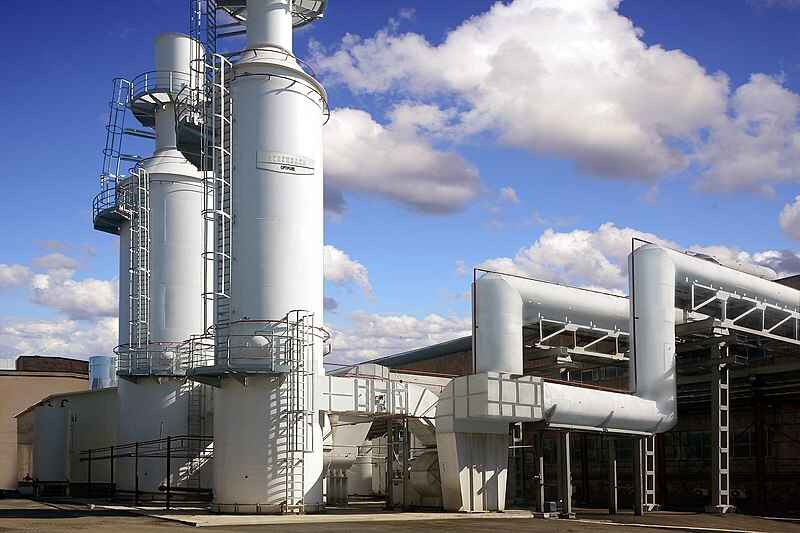Biofuel Production, Processing and Working Principle Explained
Biofuel production is a term used to refer to all measures involved in feedstock cultivation, biomass processing and refining of biofuels.
Biofuel processing is an aspect of biomass production, and may be achieved using physical, biochemical or thermochemical mechanisms.
The working principle of biofuels comprises of two stages, which are thermochemical breakdown and stored energy-conversion.
This article discusses biofuel production, processing and working principle, as outlined below;
-Biofuel Production Meaning, Methods, Steps
Biofuel Production Meaning, Methods, Steps
Biofuel production refers to the act and process of converting various forms of biomass, to biofuel that can easily be stored and utilized as an energy resource.
Generally, biofuel is produced by biomass conversion, which could be based on any of various biochemical processes and methods.
Methods of biofuel production include transesterification, esterification, fermentation and anaerobic digestion. These methods differ in terms of the feedstock or biofuel sources used, the nature of transformation, and the types of biofuels produced.
Transesterification and esterification are used to produce biodiesel from animal fats and vegetable oils [1].
Fermentation is used to breakdown lignocellulosic biomass for the production of ethanol.
Anaerobic digestion is primarily used to produce biogas or biomethane from organic matter.
The main steps in biofuel production are; feedstock cultivation and biomass conversion.
Biomass conversion may itself be separated into steps like delignification, saccharification and fermentation [5].
Biofuel production is important because biofuel is a renewable fuel whose sources are continuously regenerated in nature, making it viable as an alternative energy resource for achieving the goal of transition from fossil fuels.
Biofuel Processing
Biofuel processing is the second step or stage of biofuel production.
It includes all practices and processes that are used to transform the physicochemical characteristics of biomass feedstock, to produce biofuel. Further steps taken to improve the energy efficiency, performance and sustainability of biofuel after its production, can also be referred to as biofuel processing.
Biofuel processing may be carried out through physical, biochemical or thermochemical mechanisms.
Before converting lignocellulosic biomass to biofuel, it is often necessary to remove its lignin content, as the presence of lignin can reduce microbial efficiency for breakdown (regulated biodegradation) of biomass [11].
Such measures as lignin removal (or de-lignification) are referred to as pretreatment, because they are not part of the main process of biofuel processing/treatment.
After biofuel has been produced by the physicochemical transformation of organic matter, it can be purified by employing physical techniques like distillation [9]. Generally, refining or purification is part of biofuel processing, although it may be distinguished from the main process of biomass conversion, and may be referred to as post-treatment or post-processing.

Products of biofuel processing include ethanol, biogas, biodiesel, butanol and methanol [12].
Some important factors to be considered when planning a biofuel production process, and selecting a suitable method of biofuel processing, include availability and type(s) of feedstock, scale of the project, expected outcome, and estimated cost.
The other factors listed can help to estimate the cost of biofuel production, which determines the economic feasibility of the project [10].
How Biofuels Work
The process, principle(s) and mechanism(s) by which biofuels work to produce energy, are very similar to those behind the working of fossil fuels and their derivatives, including coal and gasoline.
Biofuels work in two main steps, which are; thermochemical breakdown, and stored energy conversion. Each of them is discussed briefly below;
1). Thermochemical Breakdown (in explanation of How Biofuels Work)
As the name implies, thermochemical breakdown of biofuel is chemical decomposition that is induced by thermal energy application.
Thermochemical breakdown can be used to refer to the process of biofuel production using methods that are driven entirely or partially by heat; such as pyrolysis and gasification [3].
With regards to how biofuels work, thermochemical conversion is only an alternative term for combustion.
This is the process whereby hydrogen and carbon atoms in a biofuel react with oxygen in the presence of heat.
The heat of combustion of biofuel ranges from approximately 38 to 42 MJ/kg, with slight differences in value among the different types of biofuels [6]. It is important to note that the heat of combustion of biofuel is a measure of the amount of thermal energy that is released per unit mass when a given quantity of biofuel is burnt in the presence of oxygen.
Combustion/thermochemical breakdown of biofuel, is associated with some unfavorable environmental impacts, like greenhouse emissions and air pollution.
Biofuels emit up to 52 percent the amount of CO2 emitted by an equal volume of petroleum. While this is significant, it indicates that the carbon footprint of biofuels is smaller than that of fossil fuels [2].
Products of biofuel combustion also include elemental carbon and organic carbon, which can occur in the form of particulate matter that is a potential risk to public health as well as a cause of environmental pollution [5].

2). Stored Energy Conversion (in explanation of How Biofuels Work)
Stored energy in biofuels is bioenergy; which is a form of chemical potential energy from organic sources.
When biofuels break down through combustion, this stored energy is converted to thermal energy.
Bioenergy in organic matter can be converted to thermal energy, either through direct combustion of raw biomass like fuelwood, or by combustion of processed biomass; which is biofuel [7].
As bioenergy is converted to heat, it is released from the decomposing biofuel. This heat can be as high as 800-1,000 °C, and beyond [8].
After stored energy has been converted and released as heat, it can then be utilized for various purposes such as domestic heating, and steam turbine operations for the generation of electricity.
Conclusion
Biofuel production is the sum total of methods, equipment and steps involved in transforming organic biomass to biofuel.
Methods of biofuel production are;
1. Transesterification
2. Esterification
3. Fermentation
4. Anaerobic digestion
Biofuels work in two basic steps, which are;
1. Thermochemical Breakdown
2. Stored Energy Conversion
References
1). Amirthavalli, V.; Warrier, A. R.; Gurunathan, B. (2022). "Chapter 6 - Various methods of biodiesel production and types of catalysts." Biofuels and Bioenergy, Opportunities and Challenges 2022, Pages 111-132. (Accessed 11 March 2023).
2). Bünger, J.; Krahl, J.; Schröder, O.; Schmidt, L.; Westphal, G. A. (2012). "Potential hazards associated with combustion of bio-derived versus petroleum-derived diesel fuel." Crit Rev Toxicol. 2012 Oct;42(9):732-50. Available at: https://doi.org/10.3109/10408444.2012.710194. (Accessed 11 March 2023).
3). Canabarro, N.; Soares, J. F.; Anchieta, C. G.; Kelling, C. S.; Mazutti, M. (2013). "Thermochemical processes for biofuels production from biomass." Sustainable Chemical Processes 1(1):22. Available at: https://doi.org/10.1186/2043-7129-1-22. (Accessed 11 March 2023).
4). Chan, C-Y.; Engling, G.; Sang, X. F.; Zhang, T. (2011). "Biofuel Combustion Emissions - Chemical and Physical Smoke Properties." Environmental Impact of Biofuels. Available at: https://doi.org/10.5772/23430. (Accessed 11 March 2023).
5). Chintagunta, A. D.; Zuccaro, G.; Kumar, M.; Kumar, S. P. J.; Garlapati, V. K.; Postemsky, P. D.; Kumar, N. S. S.; Chandel, A. K.; Simal-Gandara, J. (2021). "Biodiesel Production From Lignocellulosic Biomass Using Oleaginous Microbes: Prospects for Integrated Biofuel Production." Front Microbiol. 2021 Aug 12;12:658284. Available at: https://doi.org/10.3389/fmicb.2021.658284. (Accessed 11 March 2023).
6). DeOliveira, E.; Quirino, R.; Suarez, Z.; Prado, A. G. S. (2006). "Heats of combustion of biofuels obtained by pyrolysis and by transesterification and of biofuel/diesel blends." Thermochimica Acta 450(1-2):87-90. Available at: https://doi.org/10.1016/j.tca.2006.08.005. (Accessed 11 March 2023).
7). Lewandowski, W. M.; Ryms, M.; Kosakowski, W. (2020). "Thermal Biomass Conversion: A Review." Processes 8(5):516. Available at: https://doi.org/10.3390/pr8050516. (Accessed 11 March 2023).
8). Luo, Z.; Zhou, J. (2012). "Thermal Conversion of Biomass." In: Chen, WY., Seiner, J., Suzuki, T., Lackner, M. (eds) Handbook of Climate Change Mitigation. Springer, New York, NY. Available at: https://doi.org/10.1007/978-1-4419-7991-9_27. (Accessed 11 March 2023).
9). Pasha, M. K.; Dai, L.; Liu, D.; Guo, M.; Du, W. (2021). "An overview to process design, simulation and sustainability evaluation of biodiesel production." Biotechnol Biofuels. 2021 Jun 1;14(1):129. Available at: https://doi.org/10.1186/s13068-021-01977-z. (Accessed 11 March 2023).
10). Rathore, V.; Newalkar, B. L.; Badoni, R. P. (2016). "Processing of vegetable oil for biofuel production through conventional and non-conventional routes." Energy for Sustainable Development 31:24-49. Available at: https://doi.org/10.1016/j.esd.2015.11.003. (Accessed 11 March 2023).
11). Sengupta, S.; Bhattacharya, D.; Mukhopadhyay, M. (2020). "Chapter 4 - Downstream processing of biofuel." Genetic and Metabolic Engineering for Improved Biofuel Production from Lignocellulosic Biomass, 2020, Pages 47-62. Available at: https://doi.org/10.1016/B978-0-12-817953-6.00004-X. (Accessed 11 March 2023).
12). Shrivastava, A.; Tripathi, A. D.; Agarwal, A.; Paul, V. (2021). "Downstream Processing of Biofuels." In: Srivastava, M., Srivastava, N., Singh, R. (eds) Bioenergy Research: Basic and Advanced Concepts. Clean Energy Production Technologies. Springer, Singapore. Available at: https://doi.org/10.1007/978-981-33-4611-6_1. (Accessed 11 March 2023).



